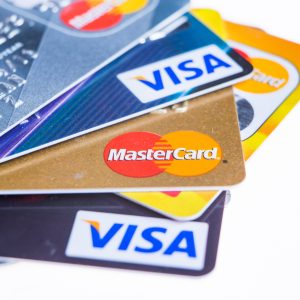
Merchant account – what is it, who needs it and why?
Merchant account is a special merchant account that allows the merchant company to accept payments from its clients 24 hours a day and 7 days a week without reference to the opening hours of the financial institution where the account is opened. Merchant accounts are opened for companies to be able to accept payments from clients of the company that pay with debit and credit cards (Visa, Mastercard and others). The availability of such an account at the company allows its customers to pay for goods at any time. Besides, existence of merchant account allows business to step boldly beyond geographical boundaries, since payments can be made from anywhere in the world. Both traditional banks and digital neo-banks open such accounts.
Types of merchant accounts.
Depending on the level of business risks accounts are divided into high-risk (high risk) and low-risk (low risk) groups. Often, high risk business includes such activities as dating sites and adult services (adult service); astrology, fortune telling, horoscopes; lotteries; travel services and air travel; gambling, betting, gaming; activities related to smoking and tobacco; crypto and forex business; pawnshops, etc. However, this division has allowed financial institutions to choose their customer niche. So some digital banks have focused specifically on clients with high-risk activities.
There is also a division of merchant accounts into trading and Internet. Here it is simple, a merchant merchant is a merchant using a physical card for payment, and an Internet merchant is online payment.
Who needs merchant accounts?
Merchant accounts are in fact needed by all merchants and services: online stores, online-casinos, dating websites, game sites, etc. Also merchant account is often necessary for representatives of offline trade and service outlets (for example, restaurants, dry cleaners, cinemas, etc.). In this case, the offline business uses a physical POS – terminal. That’s what you might have seen when you pay by card in a cafe or store or use the contactless payment service PayPass.
How does the merchant account work?
When a customer has paid for a service or product with a card on the website or at a point of sale in a terminal, the acquiring bank contacts the payment system (Visa, Mastercard, etc.). Then payment system asks confirmation of transaction from client’s card-issuing bank. If there are enough funds on the client’s card to pay for the purchase, the client’s bank confirms successful payment. The process in a few steps and participants in practice takes only a few seconds.
From the merchant’s point of view, the account is in fact a transit account. Payments are accumulated on it, and often after a few days the amount is transferred to the main bank account of the company. It is important to understand that client has no possibility to transfer money from merchant account to business account. It has to do with the fact that acquiring bank administrates merchant accounts and a few days before the payments are transferred the bank can return the funds from the merchant account as a chargeback. Chargeback is a withdrawal of payment and return of amount to the client-payer’s card. The chargeback rate shows the level of customer recalls of their payment and is measured by the percentage of funds returned to the customer.
How do I open a merchant account fast?
The speed and success of merchant account opening depends directly on the quality of information preparation for the financial institution. The key points are completeness of the corporate documents package, information about the directors and beneficiaries, profile business experience of the beneficiary or “duration of the claimed activity of the company”. The seller’s website is also important, namely:
- the site must have SSL-certificate;
- on the website must be detailed information about products and/or company services;
- on the main page should be the logos of international payment systems (Visa, MasterCard) and 3D Secure Marks;
- the website must contain the contact information of the company, including address, email and telephone number of the support service;
- the terms of delivery and the return policy of the company’s products;
- terms of delivery and return policy and mentioning conditions under which an exchange can be made;
- terms&conditions;
- all methods of payment must be specified;
- it is important to indicate the possibility of working with bank cards, and the refund policy;
- ways to ensure customer privacy (Consumer data privacy policy).
It is important to remember that opening a merchant account in traditional bank will take more time, while opening a merchant account in a non-bank allows the client to go through the procedure quickly enough and with as few questions from the compliance departments as possible.
Who can be refused in opening a trading account?
An account can be refused:
- for failure to comply with site requirements,
- for the company’s activities in the risk group not covered by the bank;
- for lack of a real business plan of a start-up company.
Why do merchant accounts get blocked?
It would seem that the most difficult stage is opening and then ahead only the successful operation of the account, but it is important to remember that the bank can block the account at any time. Reasons for blocking merchant accounts can be the following:
- changing the business profile of the company without agreement with the bank;
- non-compliance with the groups of goods declared when opening the account;
- atypically high level of merchant account chargebacks;
- starting the company in a new profile that is segmented as a high-risk activity;
- making key changes in the company (e.g., change of beneficiary) without notifying the financial institution.
Choosing a financial partner for your business profile and a comparative analysis of proposals for your best choice is our task. You can save both time and money by contacting Finance Business Service. Take advantage of our experience and knowledge!